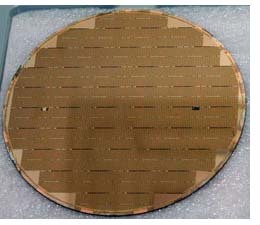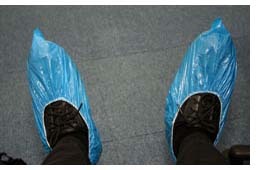Touring Western Digital's harddrive fab
Navanakorn (Thailand) - With the dual-core CPUs and graphics cards hogging up the headlines, it's easy to forget about our trusty magnetic friends, the harddrives. Making these devices is serious business, requiring serious quality control, which is what we found out when we visited the Western Digital Hard Drive factory in Navanakorn, Thailand. Join us on our tour and watch the video we brought home.
There are actually two Western Digital hard-drive plants in Thailand, the other plant is in Bang Pa-In, which is about twenty minutes away from the Navanakorn plant. These two plants employ over 30,000 employees, most of them are Thai nationals. Tawan Suppapunt, Managing Director of the Navanakorn plant, gave us the tour and explained the complicated dance that is done in hard-drive manufacturing.
The HSAs are shipped to the Navanakorn plant and fused with other parts to make the final hard-drive. Dozens of steps and parts are used in the complicated mix of assembly tools and human operators. Spacers are put in between the media platters. People electrically check components. Servo tracks are written. PCB boards are attached to the drives.
Before shipping, these drives are tested for about 24 hours to ensure that they will functional correctly out of the box. The Navanakorn plant makes the Scorpio notebook drives along with most of the desktop drives in the Western Digital line. The Raptor drives, the manufacturer's speedy 10,000 rpm SATA drives, are made in Singapore.
The parts in a Western Digital drive come from around the world, mainly from Singapore and Malaysia. Backup suppliers are on hand for each critical part, which prevents a single natural disaster or employee work stoppage from stopping the production process. In addition, there are other dangers to the production process.
Employee training in dust and particle prevention is mandatory and sometimes humorous. Posters adorn the corridors warning employees to be aware of activities that produce particles. Some of these picture warnings are common sense like not wiping your head or coughing, but others like writing love letters on your gloves or play wresting in the clean room makes you wonder - An employee probably did exactly that and likely wiped out an entire production line of hard-drives. While these precautions may seem excessive, I think you will agree that it beats having a read/write head slamming into a micrometer-sized mountain of a dust particle and wiping out six months worth of TPS reports.
Another danger to hard-drive assembly is static electricity, which can slowly build up and zap a 250 GB SATA drive into oblivion. During our tour, we had to stay within the cross-hatched yellow and black lines. Since we were not "statically-free" and not wearing smocks, we could potentially cause thousands of dollars in lost hard-drives if we accidentally touched something. Employees wanting to enter the clean room must discharge static electricity by holding onto a metal bar that blocks the entranceway. After sitting down at an assembly, the employee must connect discharge cords to their smocks. If the cord disconnects, then the tool stops working.
Get Tom's Hardware's best news and in-depth reviews, straight to your inbox.
Just like the environmental particle sensors, excess static electricity will cause sensors to trip, which will stop the production line. Some tooling areas are very sensitive to static electricity, and the threshold is set for just a few volts. The packing area, where the finished hard-drives are put into shipping cartons, has a tolerance of a few hundred volts, because the drives are already sealed.
With all of the precautions in place, The Navanakorn factory constantly churns out hard-drives with the two twelve hour shifts of employees. Exactly how many drives does this plant produce? While Mr. Suppapunt couldn't give us an exact number, he said with a smile, "You could say that we make over one million drives a month."
You can download the video we about the factory tour here.
Humphrey Cheung was a senior editor at Tom's Hardware, covering a range of topics on computing and consumer electronics. You can find more of his work in many major publications, including CNN and FOX, to name a few.

